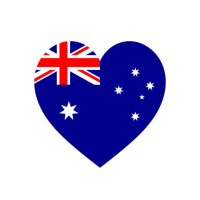reach us at [email protected].
2020 has been an unprecedented year due to the impact of COVID-19. Many changes occurred in Australian Immigration this year, from lockdown to border closure and travel ban. Now that 2020 is nearly over and we are ushering in the new year, we have decided to summarise the immigration changes that are expected to be in place in 2021.
Are you prepared for the Australian Immigration changes in 2021? Let’s take a look at what is planned for 2021 in Australian Immigration.
The migration program level would remain at 160,000 for the 2020-21 program year. Whilst the quota remained the same, the distribution of the quota will change. The family stream will increase from 47,732 places to 77,300. To ensure that Australia recruits talented individuals to help with the economic recovery, Employer-Sponsored, Global Talent, Business Innovation and Investment Program visas will be given priority. Onshore visa applicants and partner visa applicants in regional areas will also be prioritised. This is to encourage migration to regional areas of Australia.
The 2020-21 migration program aims to support the economic recovery post-COVID-19. For this reason, places for the business, investment and innovation program has increased to 13,500. The government will be streamlining and improving the operation of the Business Innovation and Investment Program from 1 July 2021. The visa application charges will also increase by 11.3% from 1 July 2021.
A Global Business and Talent Attraction Taskforce will be established. The purpose of the task force is to attract international businesses and outstanding talents to Australia to help with the post-COVID-19 economy recovery. It builds on the existing Global Talent Initiative and Business Innovation and Investment Program.
It is expected that the GTI program will be tripled to 15,000.
Related:
New changes have been introduced to the partner visas. The government has allocated 77,300 places for family visas.
Related:
The Department of Home Affairs has announced a new initiative for an additional Temporary Graduate visa with an extra one or two year of post-study work rights for international students who:
The second Temporary Graduate visa will require ongoing residence in a regional area.
The definition of regional Australia for this purpose will be the same as the definition for skilled migration – all of Australia excluding Sydney, Melbourne and Brisbane.
International graduates who have studied and lived in Category 2 will be eligible for an additional 1 year on a second Temporary Graduate visa.
International graduates who have studied and lived in Category 3 will be eligible for an additional 2 years on a second Temporary Graduate visa.
International graduates who have studied and lived in Category 3 will be eligible for an additional 2 years on a second Temporary Graduate visa.
| Definition | Locations | Regional incentives |
| Major Cities | Sydney, Melbourne
Brisbane |
NA |
| Cities and major regional centres | Perth, Adelaide
Gold Coast Sunshine Coast, Canberra Newcastle/Lake Macquarie Wollongong/Illawarra Geelong Hobart |
Access to the dedicated 25,000 regional places.
Priority processing on regional visas. Access to the Regional Occupations List – more jobs compared to non-regional lists. International students studying at regional universities will be eligible to access an additional 1 year in Australia on a post-study work visa. |
| Regional centres and other regional areas | All other locations | Access to the dedicated 25,000 regional places.
Priority processing on regional visas. Access to the Regional Occupations List – more jobs compared to non-regional lists. International students studying at regional universities will be eligible to access an additional 2 years in Australia on a post-study work visa. Priority in negotiating region-specific Designated Area Migration Agreements (DAMAs). |
In order to be eligible for this visa extension, students need to have graduated from a regional institution, and resided (including all work and study) for at least two years in a regional area immediately before applying for their second 485 visa. The second Temporary Graduate visa is also available to current post-study 485 visa holders who graduated from a regional institution, and who will have resided (including all work and study) for at least two years in a regional area immediately before applying for their second 485 visa. Visa application fee is $650 main applicant, $325 for spouse or partner and $165 for children under 18. Applications can be made from 21 Jan 2021 onwards.
Related:
Based on the budget, we will be seeing new changes to partner visa applications. One of the most significant changes to the partner visa is the English requirement. Applicants and sponsor will be required to pass the English language requirement. The aim of the test is to promote social cohesion and economic participation.
It is likely these changes will come into effect from 1 July 2021.
Related:
The overall points to receive an invitation has also dropped dramatically in the last few months. The results for the October 2020 invitation round are as follows:
Subclass 189 – The lowest score to receive an invitation was 65 points. This is a dramatic drop from the previous months, where the lowest score to receive an invitation range between 90 -110. 65 points is the lowest for the whole year however this may happen if you have an occupation on the PMSOL.
Subclass 491 – 65 points remained to be the lowest score to receive an invitation for a subclass 491 visa. The 65 points includes the extra 15 points awarded to subclass 491 visa.
Whilst there is a drop in points to receive an invitation, many people who received the invitations are in targeted sectors. This is in line with the government aims to attract migrants to help with post-COVID-19 recovery.
For many months there are no information on pro-rata occupations. The minimum points score has been N/A. It is likely that no invitations were issued for these occupations during these periods.
We expect this trend to continue through to 2021, with people in the targeted sectors receiving priority over other sectors.
Related:
Transitional arrangement for COVID-19 affected Subclass 457/482 holder
To be eligible for a subclass 186 TRT visa you must hold a subclass 457/482 and have worked for your employer for at least three years full time. However, due to COVID-19 pandemic, many businesses are adversely affected. As a result, during the pandemic, workers’ hours are reduced or been asked to take unpaid leave.
In light of the above, the government has introduced laws that allow subclass 457/482 visa holders to apply for the subclass 186 TRT despite not working full- time during the concession period. This is aligned with when the pandemic outbreak began. The start date of the concession period is 1 February 2020.
Related:
If the age exemption applies to you on the basis that you are earning at the Fair Work High Income Threshold (currently $153,600) to meet the 186 visa requirements, you will continue to be eligible for the age exemption even if your earnings have dropped due to COVID-19. The Department may apply the pro-rata income threshold.
This amendment is applicable to all applications made on or after 1 February 2020 and before 24 November 2020 and not yet decided, or applications made on or after 24 November 2020.
Onshore Student Visas
The number of subclass 500 visa applications lodged by onshore applicants has declined since the outbreak. However, the decline is not drastic as applicants are already onshore, and the border closure would have a lesser impact than offshore applicants. Some onshore applicants may also re-apply for a student visa to extend their stay in Australia as they cannot travel back home. Overall, the reduction in subclass 500 applications for onshore applicants is relatively minimal compared to offshore applicants.
Offshore Student Visas
Statistics from the Department of Home Affairs indicate the rapid decline of subclass 500 visa applications lodged by offshore applicants. This is understandable because the closure of borders has a significant impact on the applicant’s ability to travel to Australia. In most months since April 2020, the decline in the number of applications lodged has been more than 50% compared to the previous year.
To combat the negative impact of COVID-19 on the education sector, the government has put in place measures to support the education industry. Some of the support measures include:
Although some students may decide to enrol to study online, the impact of COVID-19 on the education sector will last over some time. Until travel restrictions are removed, many students will be impacted.
The budget forecast prepared by the Treasurer Josh Frydenberg and Finance Minister Mathias Cormann assumes that travel restrictions will be lifted between March 2021 and 30 June 2021.
Based on the announced policy the current plan (Between July to December 2020), is to lift the travel ban for Australian citizens, permanent residents, New Zealanders and some international students. However, Treasurer Josh Frydenberg cautioned that the policy is subject to change due to the evolving situation of coronavirus.
The key reason for this plan is to bring back international students who are stranded overseas. Continuous delay in bringing in students would affect universities drastically (even with the recent changes to support international students). The international education industry is the fourth-largest industry in Australia. Students bring approximately $39 billion into the Australian economy.
If the government are opening borders in 2021, it could also mean that overseas processing of permanent resident applications may resume.
Jacinta Arden has just announced that the New Zealand government has agreed to establish a trans-Tasman bubble with Australia. She has advised that there are still a lot of work to be done before they can make a final announcement. For this reason, there is currently no date for the travel period, but we expect to receive an update by early 2021.
Related:
The concessions that were introduced in 2020 are expected to remain in place. Read on the latest COVID-19 Concessions here.
Related:
The post Upcoming immigration changes 2021 appeared first on Australian Migration Agents and Immigration Lawyers Melbourne | SeekVisa.
most recent by Gladysconley
What is a CDR Writer in Australia?
most recent by laisei33
Meetups in Sydney? Looking for new friends!
most recent by laisei33
most recent by Jamal
most recent by tomjack54
most recent by james850g6

Where to Find Kilts for Sale online?
most recent by heavylearner

 mathilde9
mathilde9

 schrodingers_cat
schrodingers_cat

 scarlettcross
scarlettcross
 CantThinkAnyUserName
CantThinkAnyUserName

 lock_code2004
lock_code2004

 TasBurrfoot
TasBurrfoot

 batman
batman
 LokiJr
LokiJr
 danyan2001us
danyan2001us
 Captain_A
Captain_A
Upcoming immigration changes 2021
Limitation on partner visa sponsorships
Partner Visa for Same-Sex Relationships
New Zealand immigration announces visa changes for temporary workers
Victoria’s Business Innovation and Investment Program (BIIP) opens on 4 January 2021
Victoria’s skilled visa nomination program (subclass 190 and 491) reopens on 5 January 2021